Introduction
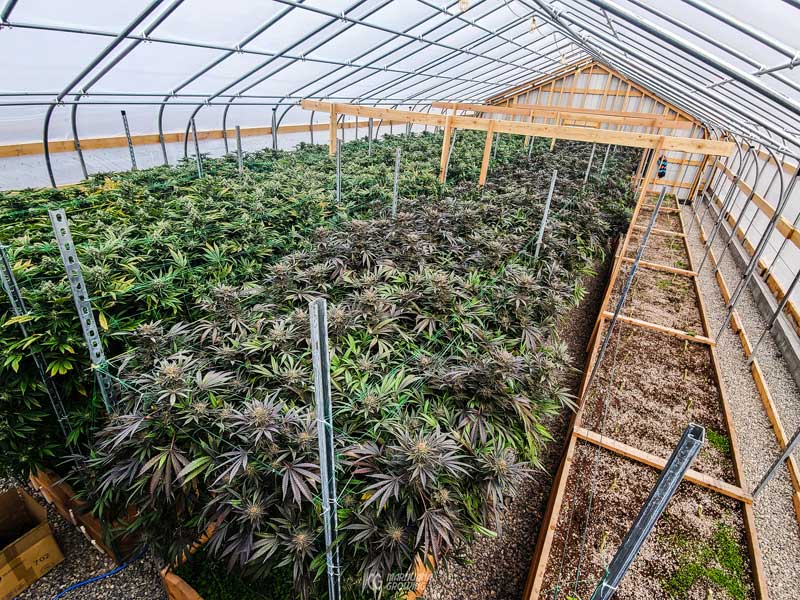
This healthy greenhouse garden is close to harvest. Raised beds warm earlier in the year and cool later, which extends the growing season. The greenhouse protects the garden from extreme weather and extends the growing season.
Cannabis cultivated indoors, in a greenhouse, or outdoors has the same basic requirements for growth. It needs light, air, water, nutrients, a growing medium, and heat to manufacture food, grow and reproduce. Without each one of these essentials, growth stops, and death soon results. The light must be of the proper spectrum and intensity; air must be in the proper temperature range and rich in carbon dioxide (400-1,200 ppm). Water must be clean and of the proper chemistry, and the growing medium must retain water and air evenly so that nutrients are readily available for vigorous growth. When all these needs are met consistently at optimum levels, optimum growth results.
Cannabis grows naturally as an annual plant completing its life cycle within one year or less. A seed that sprouts in the spring will grow big and strong through the summer and flower in the fall, producing more seeds. The annual cycle starts all over again when the new seeds sprout the following year.
Note
Regular, feminized, and auto-flowering CBD-rich cannabis, THC-rich cannabis, CBG-rich, as well as industrial hemp (cannabis) all have specific requirements for growth, production, harvest, and post-harvest.
Approximate length of each stage growth
| Growth Stage | Duration/Time |
| Germination | 2-7 days |
| Seedling | 25-30 days |
| Vegetative | 7-150 days |
| Pre-flowering | after 30 days of vegetative growth |
| Flowering | 6-12 weeks |
| Pollination | After mature female flowers form |
| Seed production | 90+ days |
| Harvest | 1+ days |
Cannabis and Energy
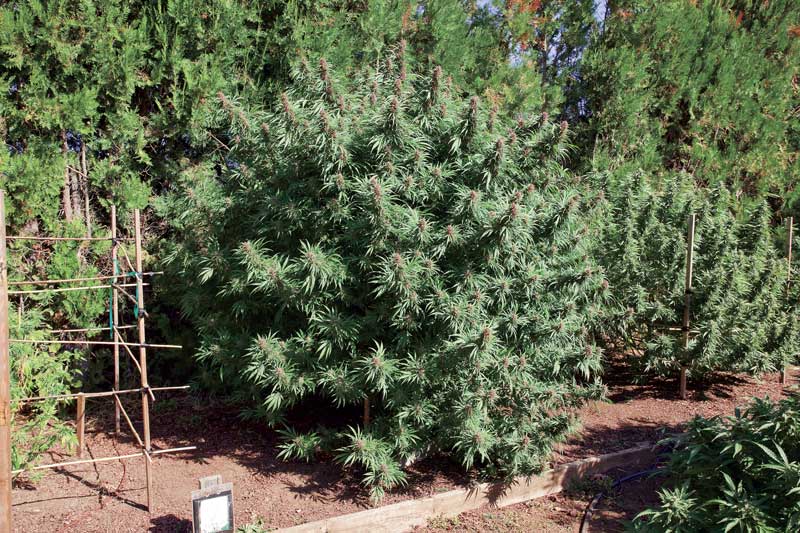
This backyard garden full of healthy Stinky Pinky and StinkBud plants from Oregon´s SoFresh Farms are grown from seed and have developed to their genetic potential.
Cannabis Seed Germination
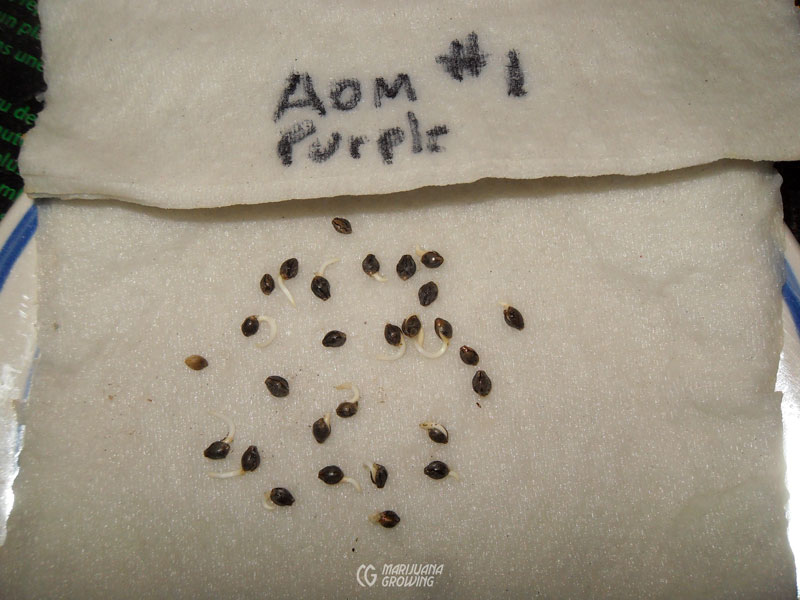
Germinating seeds is easy, but requires close attention to air temperature, substrate moisture content and temperature.
During the first growth stage, the seed germinates, establishes a root system, and grows a stem and a few leaves. After 3-7 days, regular and feminized plants enter the seedling growth stage, which lasts about a month. Auto-flowering seedlings start flowering after about three weeks of (seedling) growth.
At germination, moisture, heat, and air start a chemical sequence that stimulates hormones within the seed. Hormones signal cells – the embryo expands, nourished by a supply of stored food (energy) within the seed. The growth causes the seed’s outer coating to split, and a white rootlet grows downward, probing for nutrients. Aboveground, a sprout with two opposing rounded seed leaves (cotyledons) pushes upwards in search of light.
Cannabis Seedling Growth
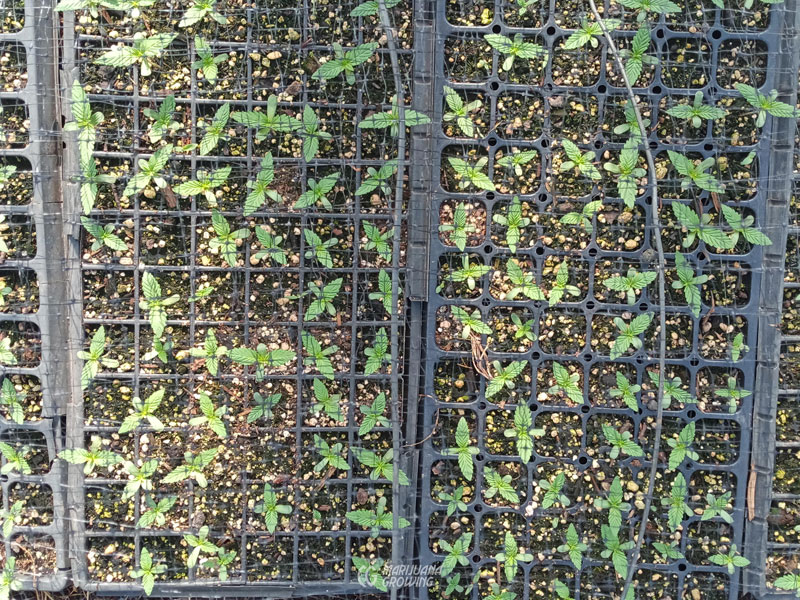
These flats of seedlings show the first set of rounded cotyledons and the first set of true leaves.
The single root, called a taproot, from the seed grows down and branches out, similar to how the stem branches aboveground. Tiny hair-like roots and rootlets develop to draw in water and nutrients.
Roots also serve to anchor a plant in the growing medium. Proper seedling growth ensures adequate energy for growth in the form of stored food.
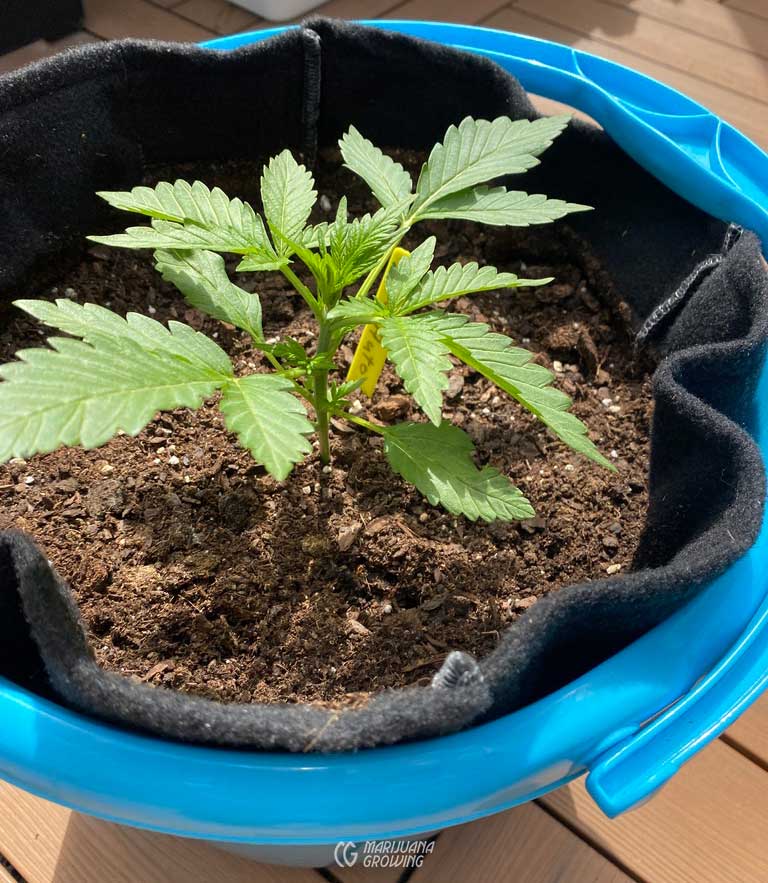
This little auto-flower seedling got a fair start on life. At 21 days from germination, it already has three sets of leaves and is developing a fourth. The first tiny female flowers started to show a few days later.
Auto-flowering plants require special care during the seedling growth stage. They must grow very, very fast during the first 3-4 weeks of life. Auto-flowering plants must grow as much foliage as possible so that they will be able to produce more flowers on big plants. The root system must grow rapidly without impediments now and throughout life. Abundant branch and foliage growth translate into more and heavier flowers at harvest.
Cannabis Vegetative Growth
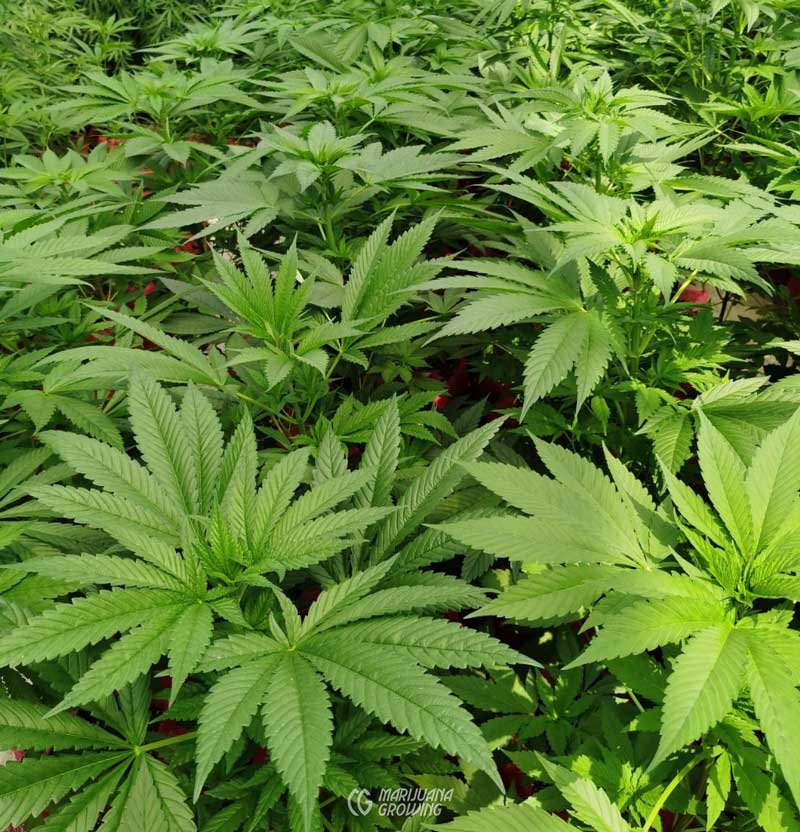
Strong, healthy unabated rapid growth is the key to a healthy, heavy harvest.
Vegetative growth is maintained in regular (male and female) cannabis by giving plants 14-24 hours of light every day/night. A point of diminishing returns is reached at 18-20 hours.
Auto-flowering cannabis produces best when they receive more than 16 hours of light.
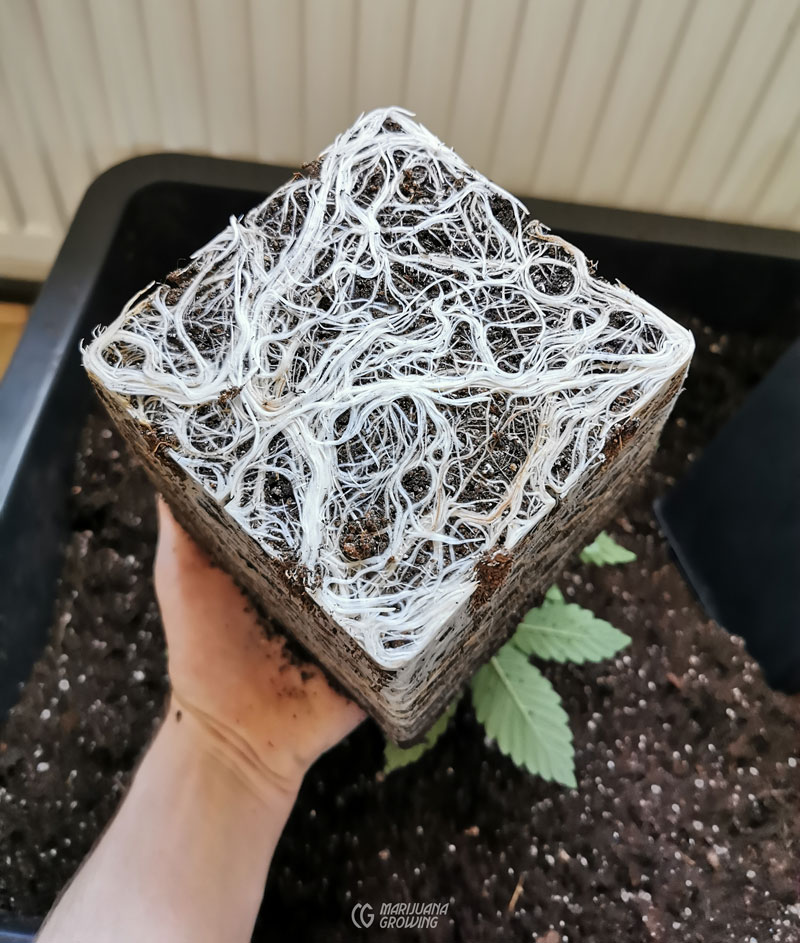
Strong, healthy roots are vibrant white with little fuzzy parts found mostly near the tips. Strong healthy roots are white, the small ones are fuzzy and hairlike.
Roots take on specialized functions as cannabis plants mature. The center and old mature portions contain a water transport system and may also store food. The tips of the roots produce elongating cells that continue to push farther and farther into the soil in search of more water and nutrients. The single-celled root hairs are the parts of the root that absorb water and nutrients. Without water, frail root hairs dry up and die. They are very delicate and are easily damaged by light, air, and clumsy hands if moved or exposed. Extreme care must be exercised during transplanting.
The stem serves to transport water and nutrients from the delicate root hairs to the growing buds, leaves, and flowers. Sugars and starches manufactured in the leaves are distributed through the plant via the stem. This fluid flow takes place near the surface of the stem. If the stem is bound too tightly by string or other tie downs, it will cut the flow of life-giving fluids, thereby strangling and killing the plant. The stem also supports the plant with stiff cellulose located within the inner walls. Outdoors, rain and wind push a plant around, causing much stiff cellulose production to keep the plant supported upright. Indoors and in greenhouses, with no natural wind or rain present, stiff cellulose production is minimal. Hence, plants develop weak stems and may need to be staked up, especially during flowering.
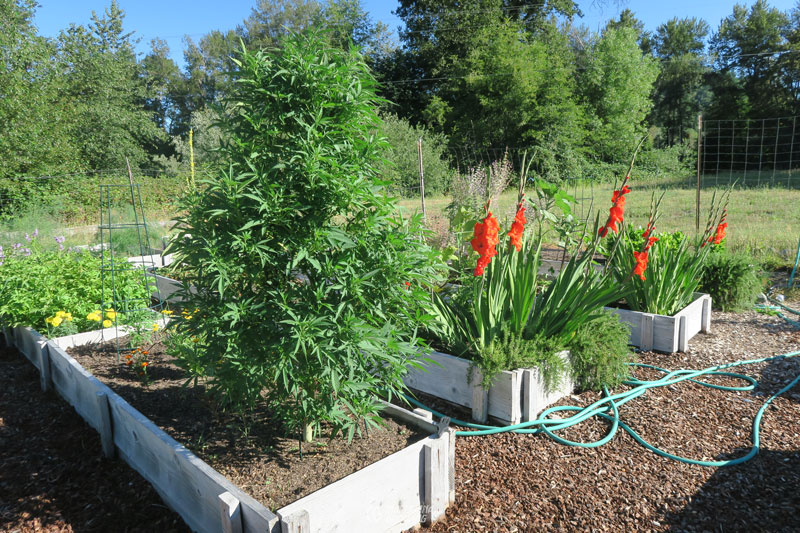
This beautiful cannabis plant was started indoors and moved outdoors in early May. The photo was taken on 12 July 2019. The plant will double in size by the time the first female flowers form.
Leaves manufacture food (carbohydrates) for the plant. Chlorophyll, the substance that gives plants their green color, captures light energy (photons), triggering molecular events that use carbon dioxide (CO2), splitting water into hydrogen and oxygen. This process, photosynthesis, creates energy that can be stored as carbohydrates such as starch. Photosynthesis requires water drawn up from the roots, through the stem, and into the leaves, where it encounters carbon dioxide. Tiny breathing pores on the underside of the leaf, called stomata, work as gas exchange factories absorbing CO2 and releasing oxygen. Water derived from transpiration is released from foliage to aid in cooling a plant in warm conditions. For photosynthesis to occur, the leaf’s interior tissue must be kept moist. The stomata open and close to regulate moisture flow, preventing dehydration. Cannabis leaves are also protected from drying out by outer skin and resin. The stomata additionally permit the outflow of water vapor and waste oxygen. The stomata are very important to the plant’s well-being.
Strong vegetative growth is essential so that cannabis plants will have enough foliage and an extensive enough root system to support many dense flowers. If plants suffer stress during the vegetative growth stage, roots do not develop properly and cannot supply enough nutrients to foliage and flowers. In nature, cannabis spends most of its life in vegetative growth. Cannabis has enough time to develop vegetative growth to produce more flowers.
Cannabis Pre-flowering
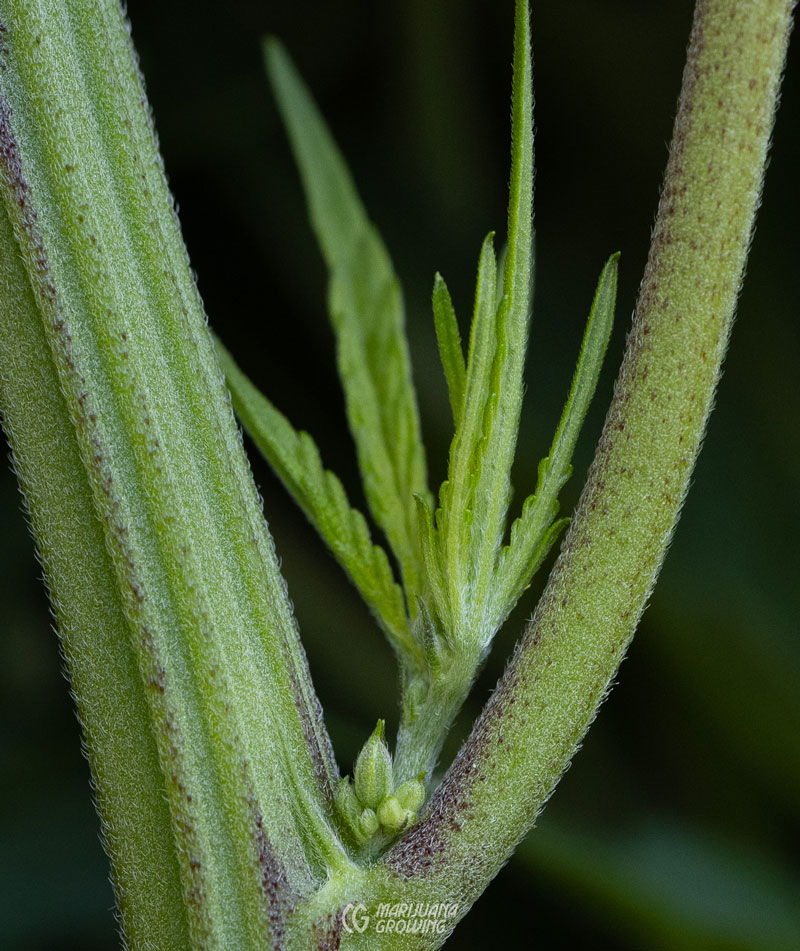
Little male cannabis flower pods full of pollen are developing on the stem at the base of a leaf and a new growing shoot. A low-power hand-held microscope makes identifying male flowers easier.
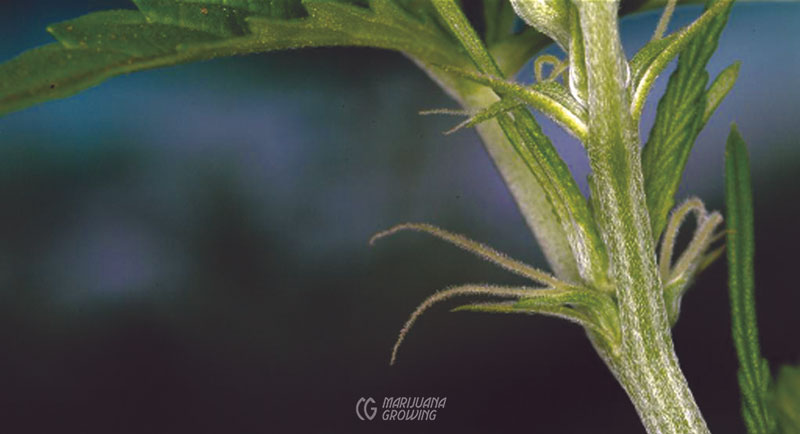
Female stigmas grow from seed bracts and appear as a pair of white fuzzy hairs. The first female pre-flowers appear after about 8 weeks of vegetative growth under normal conditions.
Regular and feminized pre-flowers on cannabis grown from seed appear about eight weeks from seed sprouting. Pre-flowers on regular and feminized cannabis generally appear between the fourth and sixth node from the bottom of the plant. Cannabis plants are typically either all male or all female. Cannabis is predominantly dioecious, imperfect flowers – staminate “male” and pistillate “female” flowers occur on separate plants. Each sex has its own distinct flowers. Preflowers will distinguish a plant as male or female. Growers remove and destroy the males (or use them for breeding stock) because they have negligible levels of cannabinoids (THC, CBD, CBG, etc.) and produce little foliage. Female plants are cultivated for their high cannabinoid content, including CBD, THC and CBG, and abundant foliage. Industrial hemp is grown for its long resilient fibers or for industrial seeds rather than foliage or cannabinoid-rich flowers.
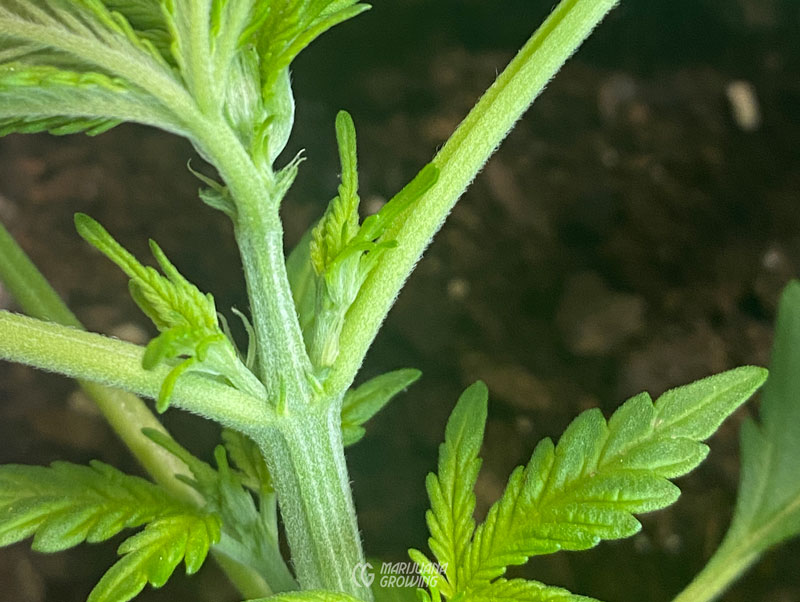
Branches on auto-flowering cannabis plants are often fairly close together on the stem.
Auto-flowering cannabis starts flowering after about 21-25 days of chronological growth. Pre-flowers set, and soon, flowers develop. After 60-70 days, the flowers are ready for harvest. The entire auto-flower plant life cycle, sprouted seed to harvest, is complete in 70-90 days regardless of day length.
Cannabis Flowering
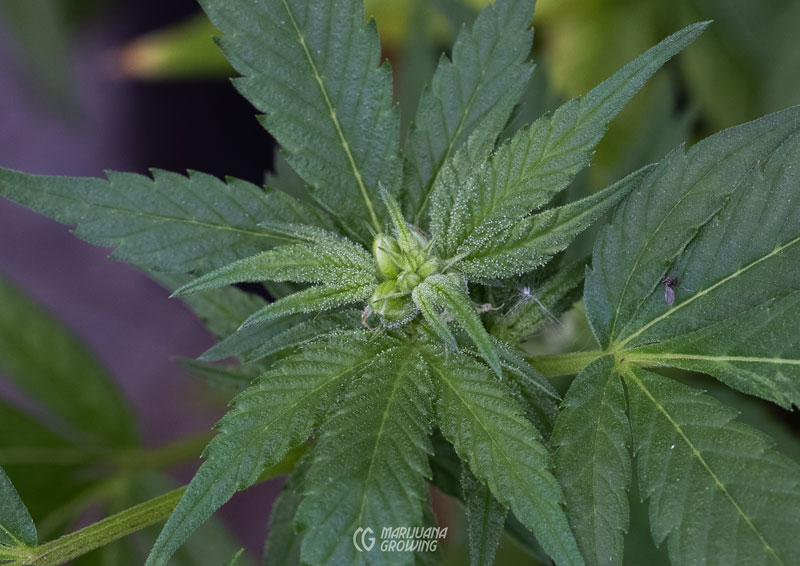
Early flowering male pollen pods are developing quickly. This male plant has abundant foliage.
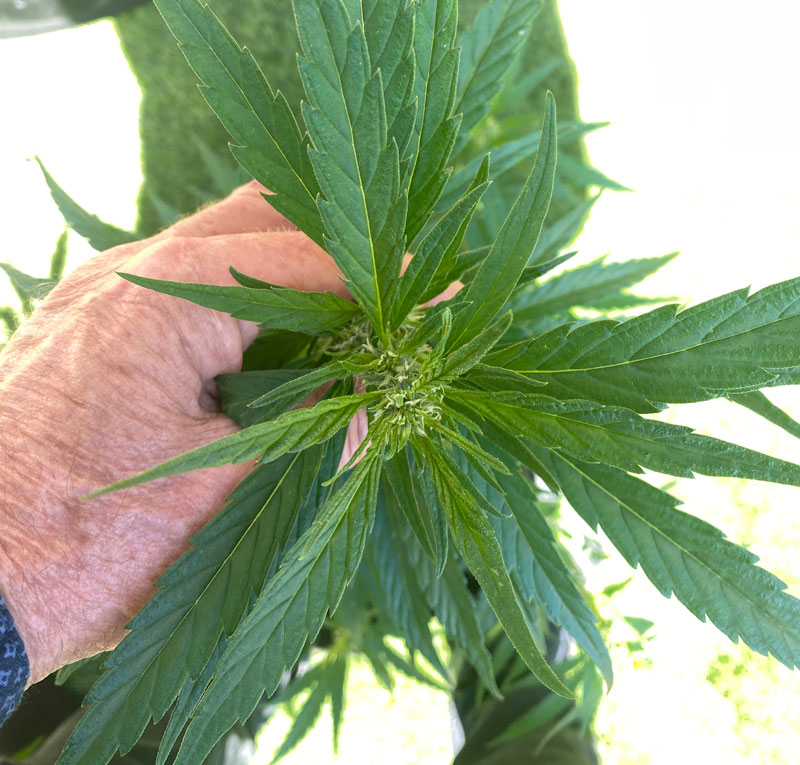
This Amnesia Haze female is in the early stages of flowering.
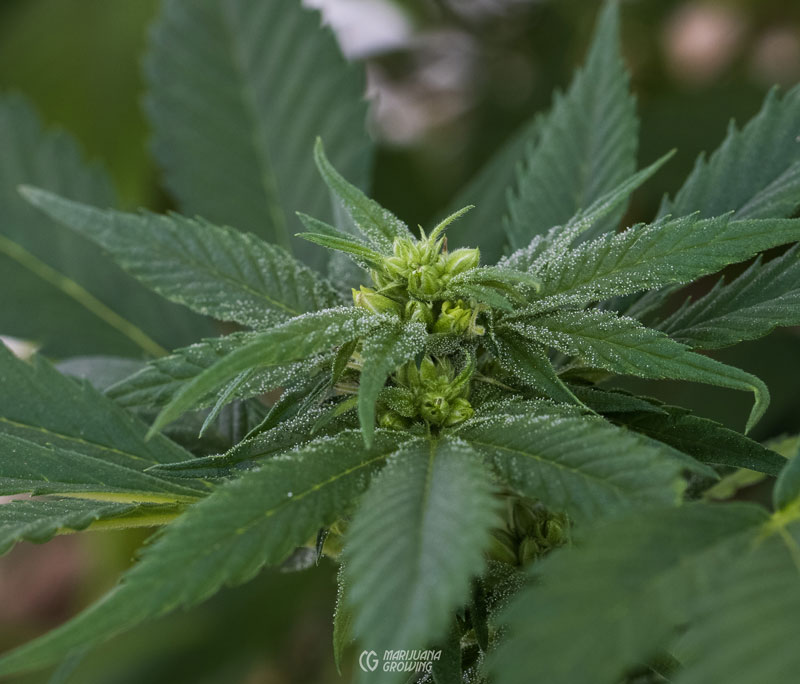
A few male flowers will open ahead of the rest and start shedding pollen. If growing regular photoperiod plants or unstable varieties, keep an eye out for males that open early.
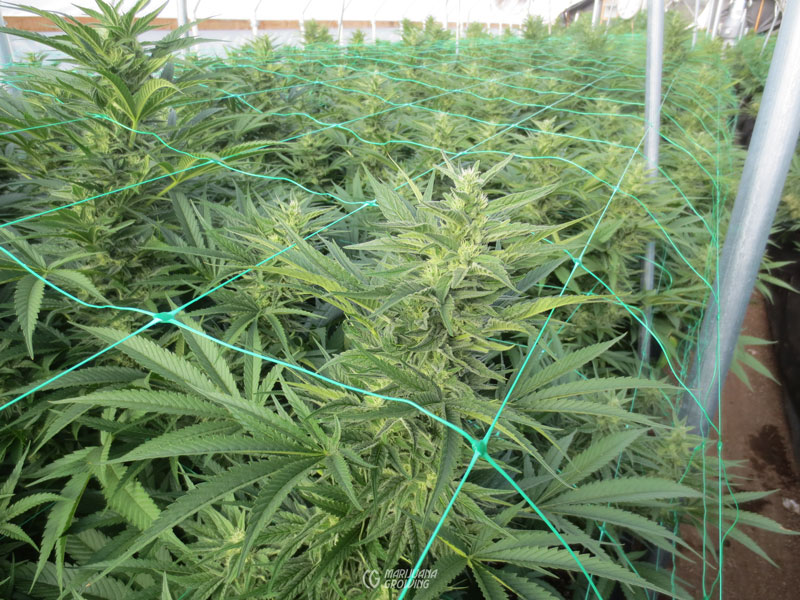
This beautiful crop of flowering females from the Original Breeders League is 3-4 weeks from harvest.
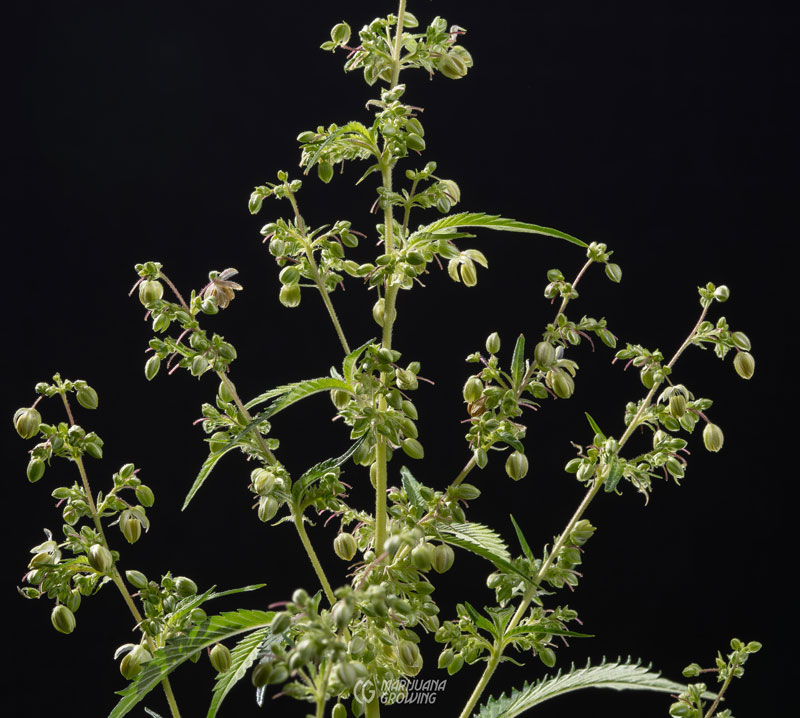
Male Stink Bud in full bloom.
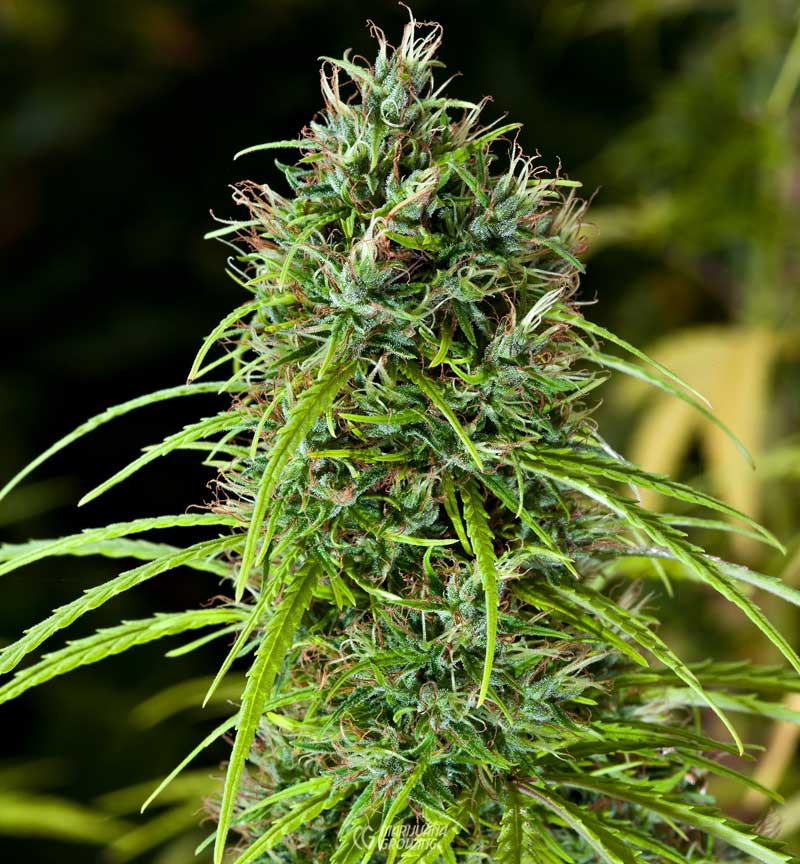
This mature Swazi Landrace top is a mass of flower buds with classic narrow leaves found on many sativa varieties.
Mid-to-late-season regular and feminized cannabis varieties start to flower when the day length drops below 14 hours. Depending upon your latitude, flowering starts about midsummer nights and becomes progressively longer.
Short-season Kush and Afghani varieties typically start flowering the first week of August and are ready to harvest in mid-to-late September. Check with seed sellers for specific flowering times in your latitude.
The length of the night signals cannabis that its annual life cycle is coming to an end. At flowering, plant functions change. Leafy growth slows, and flowers start to form. Flowering is triggered in most commercial varieties of cannabis by 12 hours of darkness and 12 hours of light every 24 hours. Outdoors, nights become longer gradually, and flowering is initiated during a period of 3-4 weeks. In controlled indoor and greenhouse environments, days and nights are changed abruptly to 12 hours. Flowers appear in 10-14 days. Plants that originated in tropical regions with less variation between day and night often start flowering under more light and less darkness.
Flowers form during the last stage of growth. Left un-pollinated, female flowers develop without seeds, “sinsemilla.” When fertilized with male pollen, female flowers develop seeds. Typically, unpollinated female plants develop dense heavy flowers with high levels of cannabinoids.
Unpollinated, female cannabis flowers continue to swell and produce more resin while waiting for male pollen to successfully complete their life cycle. After weeks of heavy flower and cannabinoid-laden resin production, CBD, THC and CBG production peak out in the unfertilized, frustrated sinsemilla flower. CBD-rich plants are often harvested 10-14 days before THCrich and CBG-rich crops. CBD and THC production develop simultaneously in lockstep. The CBD to THC ratio is thought to be predetermined by genetics, but environmental factors such as light spectrum may also cause an influence.
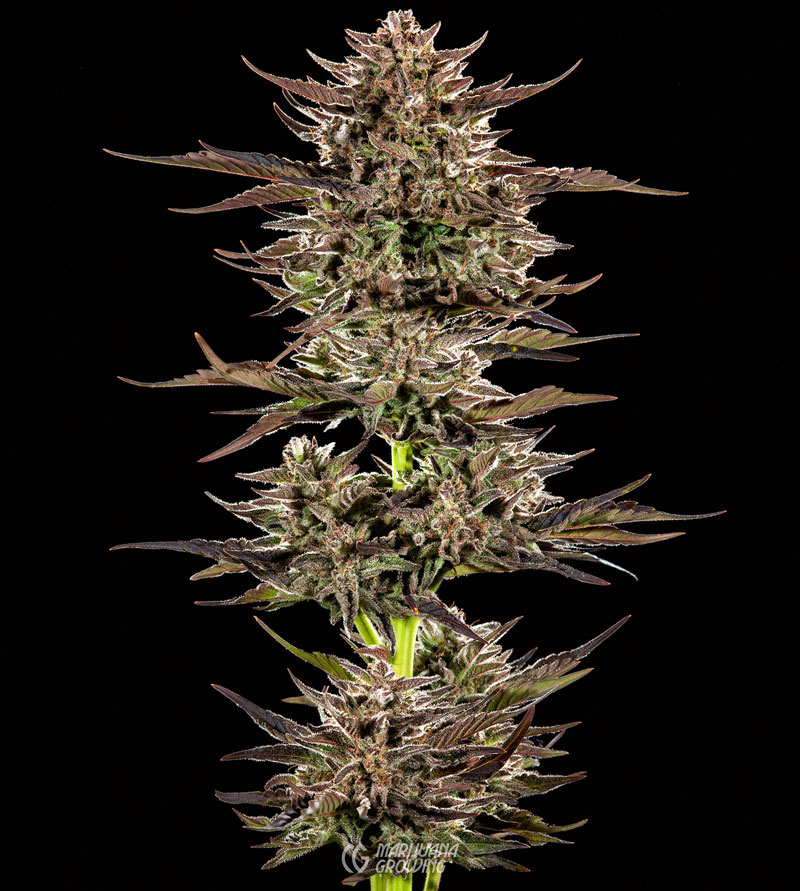
This frosted Zin auto-flower was harvested the day the photo was snapped. This cluster of flowers is an example of THCrich auto-flower varieties.
Female flowers on auto-flowering cannabis start to form about a week after pre-flowers are visible. During this time, autos continue to grow at a rapid rate if properly maintained. Flower formation is slow at first and gains momentum during the following weeks. Flowers continue to form and swell until peak resin production is reached. The short life span makes it imperative for growth to be fast and strong so that the plant can develop completely and store enough energy to produce heavy dense flowers.
Cannabis Seed Production
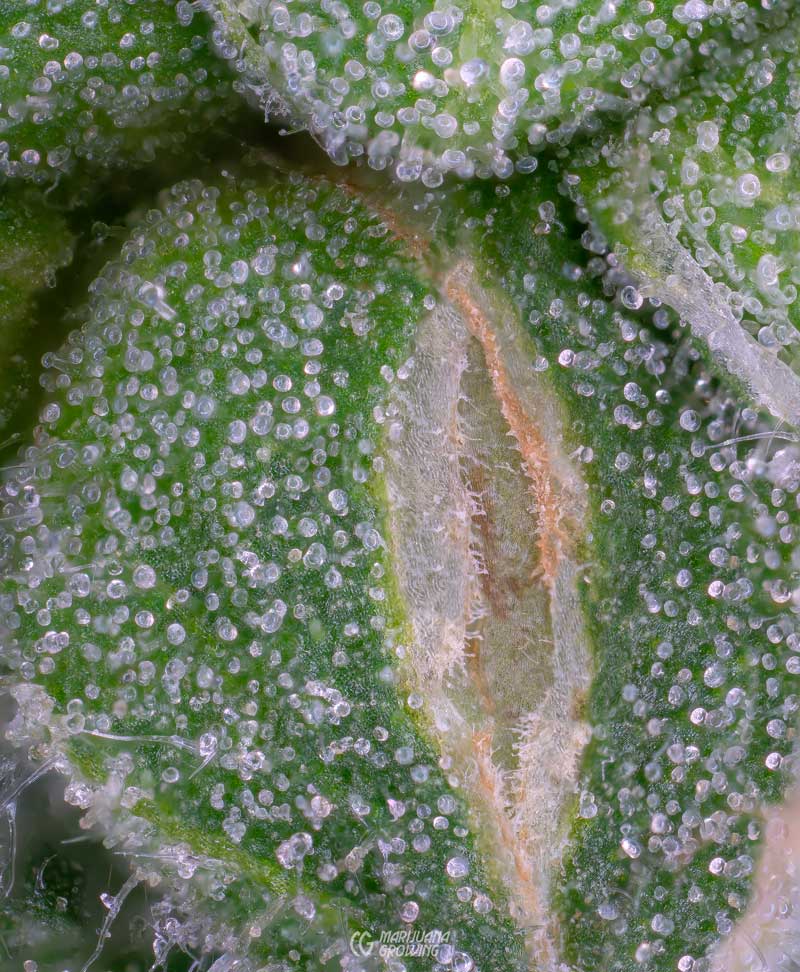
Seeds swell as they mature. The increased girth of the seed splits open the external resin-laden seed bract.
Pollen production and shedding signal the end of a male plant’s life. Seed production and maturation signal the end of the annual cannabis life cycle.
Do not forget that flowering feminized plants can be pollinated by any viable pollen from a male cannabis plant.
When both female and male flowers are in bloom, pollen from the male flower lands on the female flower, thereby fertilizing it. As the seeds mature, the female plant slowly reduces other life processes. In nature, the mature seeds fall to the ground where they tend to go dormant during the winter before germinating in the spring. Or seeds are collected by gardeners to germinate, grow and harvest to start the annual cycle again.

